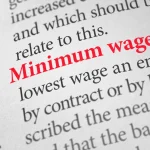‘May you Live in Interesting Times….’
This page will be updated with new information as it’s released by the Government. As new questions by clients or visitors to the site, I’ll answer them in the FAQ section at the top of this page. New and updated information will be added below the FAQ’s with the most recent at the top, and each update will also have it’s own page. Please email and questions to nadine@payrollability.co.uk and I’ll answer them as soon as we have more information.
Page last updated: Tuesday 31st March 2020
A template for a letter advising employees of the details around their furlough status, and a ‘Work Authorisation Letter’ can be found and downloaded at the bottom of the page. No email address or personal details are required to download the documents.
Content:
- FAQ’s
- Information on the Coronavirus Business Interuption Loan
- Information on the Coronavirus Job Retention Scheme
- Covid-19 and Statutory Sick Pay
- Covid-19: guidance for employees
- Downloadable Furlough Letter Template
- Downloadable Work Authorisation Letter Template
FAQ’s
Q: What is ‘Furlough’ and how do I do this? What’s the purpose of it?
A: Furloughed workers are those whose employers cannot cover staff costs due to coronavirus, and as such they have been asked to stop working, but have not been made redundant. You will need to discuss placing your employee on furlough, which means they will stay on your payroll rather than being laid off. During furlough employees cannot undertake any work for the company but can complete training at home.
Q: Can an employee do reduced hours and still be furloughed?
A: No. If an employee is furloughed, they cannot do any work for the company. If employees are placed on shorter hours they are not furloughed and the employer is still required to pay their wages at the contractually agreed rate.
Q: How can I reclaim 80% of employees’ wages?
A: The online service to make a claim isn’t yet available, however on 26/03 the Gov.UK website advises that the service should be available from the end of April 2020.
Q: Is furlough pay pensionable?
A: Yes
Q: Can I furlough an employee more than once?
A: Yes. The minimum amount of time that an employee can be furloughed for is 3 weeks, however they can return to work and be furloughed again.
Q: Can a Company that only has a single Director employed under PAYE furlough the Director? How does that work?
A: A company that employs only a single Director can put that Director into furlough, however it means that the Director can’t do any revenue generating work for the company, and can only complete work that relates to statutory duties. The 80% CJRS that a company will be able to apply for in respect of the Directors salary will only be that amount that is processed through PAYE. Dividends cannot be claimed for under CJRS.
Support for Businesses through the Coronavirus Business Interruption Loan Scheme
The following was issued by the Government on 26th March.
This information is part of a wider set of measures to support businesses during Covid-19 disruption.
The link to the original full Gov.UK web page is below:
The temporary Coronavirus Business Interruption Loan Scheme supports SMEs with access to loans, overdrafts, invoice finance and asset finance of up to £5 million and for up to 6 years.
The government will also make a Business Interruption Payment to cover the first 12 months of interest payments and any lender-levied fees, so smaller businesses will benefit from no upfront costs and lower initial repayments.
The government will provide lenders with a guarantee of 80% on each loan (subject to pre-lender cap on claims) to give lenders further confidence in continuing to provide finance to SMEs. The scheme will be delivered through commercial lenders, backed by the government-owned British Business Bank.
There are 40 accredited lenders able to offer the scheme, including all the major banks.
Eligibility
You are eligible for the scheme if:
- your business is UK based, with turnover of no more than £45 million per year
- your business meets the other British Business Bank eligibility criteria
How to access the scheme
The scheme is now open for applications. All major banks are offering this scheme.
To apply, you should talk to your bank or one of the 40 accredited finance providers (not the British Business Bank) as soon as possible, to discuss your business plan. You can find out the latest on the best ways to contact them via their websites. Please note that branches may currently be shut down to enable social distancing.
The full rules of the scheme and the list of accredited lenders are available on the British Business Bank website.
If you have an existing loan with monthly repayments you may want to ask for a repayment holiday to help with cash flow.
The Coronavirus Job Retention Scheme (CJRS)
The following was issued by the Government on 26th March.
The link to the original Gov.UK webpage is below:
https://www.gov.uk/guidance/claim-for-wage-costs-through-the-coronavirus-job-retention-scheme
The Coronavirus Job Retention Scheme is a temporary scheme open to all UK employers for at least three months starting from 1 March 2020. It is designed to support employers whose operations have been severely affected by coronavirus (COVID-19).
Employers can use a portal to claim for 80% of furloughed employees’ (employees on a leave of absence) usual monthly wage costs, up to £2,500 a month, plus the associated Employer National Insurance contributions and minimum automatic enrolment employer pension contributions on that wage. Employers can use this scheme anytime during this period.
The scheme is open to all UK employers that had created and started a PAYE payroll scheme on 28 February 2020.
Who can claim
Any UK organisation with employees can apply, including:
businesses
charities
recruitment agencies (agency workers paid through PAYE)
public authorities
You must have created and started a PAYE payroll scheme on or before 28 February 2020 and have a UK bank account.
Where a company is being taken under the management of an administrator, the administrator will be able to access the Job Retention Scheme.
Public sector organisations
The government expects that the scheme will not be used by many public sector organisations, as the majority of public sector employees are continuing to provide essential public services or contribute to the response to the coronavirus outbreak.
Where employers receive public funding for staff costs, and that funding is continuing, we expect employers to use that money to continue to pay staff in the usual fashion – and correspondingly not furlough them. This also applies to non-public sector employers who receive public funding for staff costs.
Organisations who are receiving public funding specifically to provide services necessary to respond to COVID-19 are not expected to furlough staff.
In a small number of cases, for example where organisations are not primarily funded by the government and whose staff cannot be redeployed to assist with the coronavirus response, the scheme may be appropriate for some staff.
Employees you can claim for
Furloughed employees must have been on your PAYE payroll on 28 February 2020, and can be on any type of contract, including:
full-time employees
part-time employees
employees on agency contracts
employees on flexible or zero-hour contracts
The scheme also covers employees who were made redundant since 28 February 2020, if they are rehired by their employer.
To be eligible for the subsidy, when on furlough, an employee can not undertake work for or on behalf of the organisation. This includes providing services or generating revenue. While on furlough, the employee’s wage will be subject to usual income tax and other deductions.
This scheme is only for employees on agency contracts who are not working.
If an employee is working, but on reduced hours, or for reduced pay, they will not be eligible for this scheme and you will have to continue paying the employee through your payroll and pay their salary subject to the terms of the employment contract you agreed.
Employers should discuss with their staff and make any changes to the employment contract by agreement. When employers are making decisions in relation to the process, including deciding who to offer furlough to, equality and discrimination laws will apply in the usual way.
To be eligible for the subsidy employers should write to their employee confirming that they have been furloughed and keep a record of this communication.
Employees hired after 28 February 2020 cannot be furloughed or claimed for in accordance with this scheme.
You do not need to place all your employees on furlough. However, those employees who you do place on furlough cannot undertake work for you.
If your employee is on unpaid leave
Employees on unpaid leave cannot be furloughed, unless they were placed on unpaid leave after 28 February.
If your employee is on Statutory Sick Pay
Employees on sick leave or self-isolating should get Statutory Sick Pay, but can be furloughed after this.
Employees who are shielding in line with public health guidance can be placed on furlough.
If your employee has more than one job
If your employee has more than one employer they can be furloughed for each job. Each job is separate, and the cap applies to each employer individually.
If your employee does volunteer work or training
A furloughed employee can take part in volunteer work or training, as long as it does not provide services to or generate revenue for, or on behalf of your organisation.
However, if workers are required to for example, complete online training courses whilst they are furloughed, then they must be paid at least the NLW/NMW for the time spent training, even if this is more than the 80% of their wage that will be subsidised.
If your employee is on Maternity Leave, contractual adoption pay, paternity pay or shared parental pay
Individuals who are on or plan to take Maternity Leave must take at least 2 weeks off work (4 weeks if they work in a factory or workshop) immediately following the birth of their baby. This is a health and safety requirement. In practice, most women start their Maternity Leave before they give birth.
If your employee is eligible for Statutory Maternity Pay (SMP) or Maternity Allowance, the normal rules apply, and they are entitled to claim up to 39 weeks of statutory pay or allowance.
Employees who qualify for SMP, will still be eligible for 90% of their average weekly earnings in the first 6 weeks, followed by 33 weeks of pay paid at 90% of their average weekly earnings or the statutory flat rate (whichever is lower). The statutory flat rate is currently £148.68 a week, rising to £151.20 a week from April 2020.
If you offer enhanced (earnings related) contractual pay to women on Maternity Leave, this is included as wage costs that you can claim through the scheme.
The same principles apply where your employee qualifies for contractual adoption, paternity or shared parental pay.
Work out what you can claim
Employers need to make a claim for wage costs through this scheme.
You will receive a grant from HMRC to cover the lower of 80% of an employee’s regular wage or £2,500 per month, plus the associated Employer National Insurance contributions and minimum automatic enrolment employer pension contributions on that subsidised wage. Fees, commission and bonuses should not be included.
At a minimum, employers must pay their employee the lower of 80% of their regular wage or £2,500 per month. An employer can also choose to top up an employee’s salary beyond this but is not obliged to under this scheme.
We will issue more guidance on how employers should calculate their claims for Employer National Insurance Contributions and minimum automatic enrolment employer pension contributions, before the scheme becomes live.
Full time and part time employees
For full time and part time salaried employees, the employee’s actual salary before tax, as of 28 February should be used to calculate the 80%. Fees, commission and bonuses should not be included.
Employees whose pay varies
If the employee has been employed (or engaged by an employment business) for a full twelve months prior to the claim, you can claim for the higher of either:
the same month’s earning from the previous year
average monthly earnings from the 2019-20 tax year
If the employee has been employed for less than a year, you can claim for an average of their monthly earnings since they started work.
If the employee only started in February 2020, use a pro-rata for their earnings so far to claim.
Once you’ve worked out how much of an employee’s salary you can claim for, you must then work out the amount of Employer National Insurance Contributions and minimum automatic enrolment employer pension contributions you are entitled to claim.
Employer National Insurance and Pension Contributions
All employers remain liable for associated Employer National Insurance contributions and minimum automatic enrolment employer pension contributions on behalf of their furloughed employees.
You can claim a grant from HMRC to cover wages for a furloughed employee, equal to the lower of 80% of an employee’s regular salary or £2,500 per month, plus the associated Employer National Insurance contributions and minimum automatic enrolment employer pension contributions on paying those wages.
You can choose to provide top-up salary in addition to the grant. Employer National Insurance Contributions and automatic enrolment contribution on any additional top-up salary will not be funded through this scheme. Nor will any voluntary automatic enrolment contributions above the minimum mandatory employer contribution of 3% of income above the lower limit of qualifying earnings (which is £512 per month until 5th April and will be £520 per month from 6th April 2020 onwards).
National Living Wage/National Minimum Wage
Individuals are only entitled to the National Living Wage (NLW)/National Minimum Wage (NMW) for the hours they are working.
Therefore, furloughed workers, who are not working, must be paid the lower of 80% of their salary, or £2,500 even if, based on their usual working hours, this would be below NLW/NMW.
However, if workers are required to for example, complete online training courses whilst they are furloughed, then they must be paid at least the NLW/NMW for the time spent training, even if this is more than the 80% of their wage that will be subsidised.
What you’ll need to make a claim
Employers should discuss with their staff and make any changes to the employment contract by agreement. Employers may need to seek legal advice on the process. If sufficient numbers of staff are involved, it may be necessary to engage collective consultation processes to procure agreement to changes to terms of employment.
To claim, you will need:
your ePAYE reference number
the number of employees being furloughed
the claim period (start and end date)
amount claimed (per the minimum length of furloughing of 3 weeks)
your bank account number and sort code
your contact name
your phone number
You will need to calculate the amount you are claiming. HMRC will retain the right to retrospectively audit all aspects of your claim.
Claim
The online service you’ll use to claim is not available yet. We expect it to be available by the end of April 2020.
You can only submit one claim at least every 3 weeks, which is the minimum length an employee can be furloughed for. Claims can be backdated until the 1 March if applicable.
What to do after you’ve claimed
Once HMRC have received your claim and you are eligible for the grant, they will pay it via BACS payment to a UK bank account.
You should make your claim in accordance with actual payroll amounts at the point at which you run your payroll or in advance of an imminent payroll.
You must pay the employee all the grant you receive for their gross pay, no fees can be charged from the money that is granted. You can choose to top up the employee’s salary, but you do not have to.
When the government ends the scheme
When the government ends the scheme, you must make a decision, depending on your circumstances, as to whether employees can return to their duties. If not, it may be necessary to consider termination of employment (redundancy).
Employees that have been furloughed
Employees that have been furloughed have the same rights as they did previously. That includes Statutory Sick Pay entitlement, maternity rights, other parental rights, rights against unfair dismissal and to redundancy payments.
Once the scheme has been closed by the government, HMRC will continue to process remaining claims before terminating the scheme.
Income tax and Employee National Insurance
Wages of furloughed employees will be subject to Income Tax and National Insurance as usual. Employees will also pay automatic enrolment contributions on qualifying earnings, unless they have chosen to opt-out or to cease saving into a workplace pension scheme.
Employers will be liable to pay Employer National Insurance contributions on wages paid, as well as automatic enrolment contributions on qualifying earnings unless an employee has opted out or has ceased saving into a workplace pension scheme.
Tax Treatment of the Coronavirus Job Retention Grant
Payments received by a business under the scheme are made to offset these deductible revenue costs. They must therefore be included as income in the business’s calculation of its taxable profits for Income Tax and Corporation Tax purposes, in accordance with normal principles.
Businesses can deduct employment costs as normal when calculating taxable profits for Income Tax and Corporation Tax purposes.
COVID-19 and Statutory Sick Pay (SSP)
The following was issued and updated by the Government on 19th March 2020.
The link to the original Gov.UK web page can be found below:
Employees and the Self-Employed
To make sure people in work can take the necessary time off to stay at home if they are suffering from coronavirus or to prevent its spread, changes have been made to Statutory Sick Pay and how Universal Credit supports self-employed claimants.
This includes:
- people who cannot work due to coronavirus and are eligible for Statutory Sick Pay will get it from day one, rather than from the fourth day of their illness – we intend to legislate so this measure applies retrospectively from 13 March 2020
- Statutory Sick Pay will be payable to people who are staying at home on government advice, not just those who are infected, from 13 March 2020 after regulations were laid on 12 March 2020 – employers are urged to use their discretion about what evidence, if any, they ask for
- if employees need to provide evidence to their employer that they need to stay at home due to coronavirus, they will be able to get it from the NHS 111 Online instead of having to get a fit note from their doctor – this is currently under development and will be made available soon
- self-employed claimants on Universal Credit who are required to stay at home or are ill as a result of coronavirus will not have a Minimum Income Floor (an assumed level of income) applied for a period of time while affected
Businesses
- The government wants to ensure businesses are supported to deal with the temporary economic impacts of an outbreak of coronavirus.
- Employers with fewer than 250 employees will be able to reclaim Statutory Sick Pay for employees unable to work because of coronavirus. This refund will be for up to 2 weeks per employee.
Covid-19: guidance for employees
The following was issued by the Government on 26th March.
The link to the original Gov.UK webpage is below:
You should work from home unless it is impossible for you to do so.
Sometimes this will not be possible, as not everyone can work from home. Certain jobs require people to travel to their place of work – for instance if you operate machinery, work in construction or manufacturing, or are delivering front line services.
See the full guidance on going to work.
Staying at home
If you have symptoms of coronavirus infection (COVID-19), however mild, stay at home and do not leave your house for 7 days from when your symptoms started.
If you live with others and you are the first in the household to have symptoms of coronavirus, then you must stay at home for 7 days, but all other household members who remain well must stay at home and not leave the house for 14 days. The 14-day period starts from the day when the first person in the house became ill.
See the stay at home guidance for more information.
Sick pay
You can get £94.25 per week Statutory Sick Pay (SSP) if you’re too ill to work. It’s paid by your employer for up to 28 weeks.
If you are staying at home because of COVID-19 you can now claim SSP. This includes individuals who are caring for people in the same household and therefore have been advised to do a household quarantine.
To check your sick pay entitlement, you should talk to your employer, and visit the Statutory Sick Pay (SSP) page for more information.
SSP start date
We are legislating for SSP to be paid from day 1, rather than day 4, of your absence from work if you are absent from work due to sickness or need to stay at home due to COVID-19. Once the legislation has been passed, this will apply retrospectively from 13 March. You should talk to your employer if you are eligible for SSP and need to claim.
Proof of sickness
If you have COVID-19 or are advised to stay at home, you can get an ‘isolation note’ by visiting NHS 111 online, rather than visiting a doctor. For COVID-19 cases this replaces the usual need to provide a ‘fit note’ (sometimes called a ‘sick note’) after 7 days of sickness absence.
If you’re self-employed or not eligible for SSP
If you are not eligible for SSP – for example if you are self-employed or earning below the Lower Earnings Limit of £118 per week – and you have COVID-19 or are advised to stay at home, you can now more easily make a claim for Universal Credit or new style Employment and Support Allowance.
If you are eligible for new style Employment and Support Allowance, it will now be payable from day 1 of sickness, rather than day 8, if you have COVID-19 or are advised to stay at home.
Furloughed workers
If you and your employer both agree, your employer might be able to keep you on the payroll if they’re unable to operate or have no work for you to do because of coronavirus (COVID-19). This is known as being ‘on furlough’.
You could get paid 80% of your wages, up to a monthly cap of £2,500.
If your salary is reduced as a result of these changes, you may be eligible for support through the welfare system, including Universal Credit.
Check if you could be covered by the Coronavirus Job Retention Scheme.
Claiming benefits
Whether you are currently in or out of work, if you are on a low income and affected by the economic impacts of COVID-19, you will be able to access the full range of the welfare system, including Universal Credit.
From 6 April we are increasing the standard allowance in Universal Credit and the basic element in Working Tax Credit for 1 year. Both will increase by £20 per week on top of planned annual uprating. This will apply to all new and existing Universal Credit claimants and to existing Working Tax Credit claimants.





